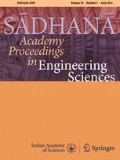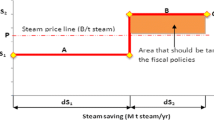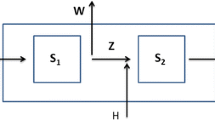Abstract
This study presents a case study of energy management in a sugar factory in Turkey. The main idea of the study is to analyse energy consumption, the quantity of material production, and figure out a suitable energy efficiency for the case study of a sugar factory subsequently. Firstly, a material production and energy consumption audit were performed for the sugar factory. Secondly, energy efficiency was calculated from the energy data. The SPSS (Statistical Package for the Social Sciences) statistical software was used to ensure the accuracy of the data. The factory’s energy consumption was calculated as 43,590.25 toe (tons of oil equivalent) over the last year. These results were used for CUSUM (Cumulative Sum Deviation Method) graphics. This research poses the consumption of energy, cost of energy and the relationship between energy usage and material production of sugar. The unit of energy cost was 688.22 [$/toe] for the last year. This result showed that the factory decreased the unit of energy by optimisation. The results indicated that the investigated sugar factory should pay attention to the energy management issue in order to comply with the Energy Efficiency of Turkish Law and Directives.







Similar content being viewed by others
Abbreviations
- \( {\dot{{\text{C}}}}_{\text{En}} \) :
-
the unit of energy cost, $/toe
- \( {\text{E}}_{\text{e}} \) :
-
total energy consumption, toe
- a:
-
slide in the horizontal axis
- b:
-
slope of the line in the horizontal axis
- \( {\text{C}}_{\text{cost}} \) :
-
total investment cost, $
- \( {\text{CS}}_{\text{i}} \) :
-
sum of CUSUM value
- \( {\text{D}}_{\text{i}} \) :
-
difference value
- E:
-
energy consumption, Gcal; toe
- \( {\text{E}}_{\text{j}} \) :
-
consumption of energy amount, toe
- \( {\text{E}}_{\text{p}} \) :
-
total energy production, toe
- i, j:
-
notation
- P:
-
material production, tonnes
- \( {\text{P}}_{\text{i}} \) :
-
specific variable of material production amounts, tonnes
- \( {\text{P}}_{\text{pr}} \) :
-
total sale price, $
- \( {\text{R}}^{ 2} \) :
-
R Squared (Linear regression analysis symbol)
- t:
-
tonnes
- ANOVA:
-
analysis of variance
- CUSUM:
-
cumulative sum
- CUSUMSQ:
-
cumulative sum of squares
- DE:
-
differential evolution
- GA:
-
genetic algorithm
- HVAC:
-
heating, ventilating and air conditioning
- PASW:
-
predictive analytics software
- PDS:
-
public distribution system
- PSO:
-
particle swarm optimization
- SEC:
-
specific energy consumptions, \( {\text{toe/t}} \)
- SPSS:
-
statistical package for the social sciences
- Σ:
-
Sum
References
Palensky P and Dietrich D 2011 Demand side management: demand response, intelligent energy systems, and smart loads. IEEE Trans. Ind. Informat. 7(3): 381–388
Wang L 2009 Energy Project Management in Food Processing, Facilities Energy Efficiency and Management in Food Processing Facilities. New York: CRC Press
Taner T and Sivrioglu M 2014 Thermoeconomic analysis for the power plants of sugar factories. J. Faculty Eng. Architect. Gazi Univ. 29(2): 407–414
Abdelaziz E A, Saidur R and Mekhilef S 2011 A review on energy saving strategies in industrial sector. Renew. Sustain. Energy Rev. 15: 150–168
Petrecca G 1993 Industrial Energy Management: Principles and Applications. Massachusetts: Kluwer Academic Publisher
Taner T 2015 Optimisation processes of energy efficiency for a drying plant: a case of study for Turkey. Appl. Thermal Eng. 80: 247–260
Kannan R and Boie W 2003 Energy management practices in SME—case study of a bakery in Germany. Energy Conver. Manag. 44: 945–59
Giacone E and Mancò S 2012 Energy efficiency measurement in industrial processes. Energy 38: 331–345
Bunsea K, Vodicka M, Schönslebena P, Brülhart M and Ernst F O 2011 Integrating energy efficiency performance in material production management e gap-analysis between industrial needs and scientific literature. J. Cleaner Mater. Prod. 19: 667–679
Tanaka K 2008 Assessment of energy efficiency performance measures in industry and their application for policy. Energy Policy 36: 2887—2902
Gielen D and Taylor P 2009 Indicators for industrial energy efficiency in India. Energy 34: 962–969
Palamutcu S 2010 Electric energy consumption in the cotton textile processing stages. Energy 35: 2945–2952
Taner T 2002 Energy Management for Turkish Industry. MSc Thesis, Denizli: Pamukkale University Institute of Science [in Turkish]
Republic of Turkey Ministry of Energy and Natural Resources 2014 General Directorate of Renewable Energy. Energy management principle for industry. Volume I, Fourth Revision, Ankara, Turkey [in Turkish]
Ramirez C A, Patel M and Blok K 2006 From fluid milk to milk powder: energy use and energy efficiency in the European dairy industry. Energy 31: 1984–2004
Ramirez C A, Patel M and Blok K 2006 How much energy to process one pound of meat? A comparison of energy use and specific energy consumption in the meat industry of four European countries. Energy 31: 2047–2063
Xu T, Flapper J and Kramer K J 2009 Characterization of energy use and performance of global cheese processing. Energy 34: 1993–2000
Dörr M, Wahren S and Bauernhans T 2013 Methodology for energy efficiency on process level. Procedia CIRP 7: 652–657
Zhang J, Deng S, Shen F, Yang X, Liu G, Guo H, Li Y, Hong X, Zhang Y, Peng H, Zhang X, Li L and Wang Y 2011 Modeling the relationship between energy consumption and economy development in China. Energy 36: 4227–4234
Department of Minerals and Energy Pretoria 2005 Industrial Energy Management Training Course, Module 7: Energy Monitoring, Targeting & Reporting. Republic of South Africa: 1–34. Available from: www.energy.gov.za/EEE/Projects, Access date: 05/01/2015
Morvay Z and Gvozdenac D 2008 Applied Industrial Energy and Environmental Management. Chicester: John Wiley & Sons Ltd
Beggs C 2002 Energy: Management, Supply and Conversation. Oxford: Butterworth-Heinemann
Sustainable Energy Authority of Ireland 1996 Department of the Environment, Investment Appraisal for Industrial Energy Efficiency, Good Practice Guide 69. Oxfordshire Available from: www.seai.ie/Archive1, Access date: 10/01/2015
Blatt S 1996 The facilities manager’s energy primer, Good Practice Guide 69. British Institute of Facilities Management, Department of the Environment and the Royal Institution of Chartered Surveyors, Cambridge Available from: www.carltd.com/sites/carwebsite, Access date: 10/01/2015
Turner W and Doty S 2006 Energy Management Handbook. 6th edition. Georgia: The Fairmont Press
Chen J, Wang X and Steemers K 2013 A statistical analysis of a residential energy consumption survey study in Hangzhou, China. Energy Build. 66: 193–202
Reilly D, Duffy A, Willis D and Conlon M 2013 Development and implementation of a simplified residential energy asset rating model. Energy Build. 65: 159–166
Mavromatidis G, Acha S and Shah N 2013 Diagnostic tools of energy performance for supermarkets using Artificial Neural Network algorithms. Energy Build. 62: 304–314
Díaz J J V, Wilby M R, González A B R and Munoz J G 2013 EEOnt: an ontological model for a unified representation of energy efficiency in buildings. Energy Build. 60: 20–27
Gul M S and Patidar S 2015 Understanding the energy consumption and occupancy of a multi-purpose academic building. Energy Build. 2015: 87:155–165
Granderson J, Piette M A and Ghatikar G 2011 Building energy information systems: user case studies. Energy Efficiency 4: 17–30
Chen S, Li N, Guan J, Xie Y, Sun F and Ni J 2008 A statistical method to investigate national energy consumption in the residential building sector of China. Energy Build. 40: 654–665
Aranda A, Ferreira G, Mainar-Toledo M D, Scarpellini S and Sastresa E L 2012 Multiple regression models to predict the annual energy consumption in the Spanish banking sector. Energy Build. 49: 380–387
Turhan C, Kazanasmaz T, Uygun I E, Ekmen K E and Akkurt G G 2014 Comparative study of a building energy performance software (KEP-IYTE-ESS) and ANN-based building heat load estimation. Energy Build. 85: 115–125
Huebner G M, Cooper J and Jones K 2013 Domestic energy consumption—What role do comfort, habit, and knowledge about the heating system play? Energy Build. 66: 626–636
Orosa J A and Oliveira A C 2011 Reducing energy peak consumption with passive climate control methods. Energy Build. 43: 2282–2288
Choi I Y, Cho S H and Kim J T 2012 Energy consumption characteristics of high-rise apartment buildings according to building shape and mixed-use development. Energy Build. 46: 123–131
Kalayci S 2010 SPSS Applied Multivariate Statistical Techniques. Ankara: Asil Publishing
Aksozen M, Daniel M, Hassler U and Kohler N 2015 Building age as an indicator for energy consumption. Energy Build. 87: 74–86
Farreny R, Oliver-Solà J, Escuder-Bonilla S, Roca-Martí M, Sevigné E, Gabarrell X and Rieradevall J 2012 The metabolism of cultural services. Energy and water flows in museums. Energy Build. 47: 98–106
Chen S, Yoshino H and Li N 2010 Statistical analyses on summer energy consumption characteristics of residential buildings in some cities of China. Energy Build. 42: 136–146
Sun S and Anwar S 2015 Electricity consumption, industrial production, and entrepreneurship in Singapore. Energy Policy 77: 70–78
Bastola U and Sapkota P 2015 Relationships among energy consumption, pollution emission, and economic growth in Nepal. Energy 80: 254–262
Farhani S, Chaibi A and Rault C 2014 CO2 emissions, output, energy consumption, and trade in Tunisia. Econ. Model. 38: 426–434
Lin B and Moubarak M 2014 Renewable energy consumption – Economic growth nexus for China. Renew. Sustain. Energy Rev. 40: 111–117
Lim K M, Lim S Y and Yoo S H 2014 Short- and long-run elasticities of electricity demand in the Korean service sector. Energy Policy 67: 517–521
Braga L C, Braga A R and Braga C M P 2013 On the characterization and monitoring of building energy demand using statistical process control methodologies. Energy Build. 65: 205–219
Ouyang X and Lin B 2014 A projection of future electricity intensity and conservation potential in the Chinese building materials industry. Energy Build. 84: 268–276
Wang H, Chen Y, Chan C W H and Qin J 2011 A robust fault detection and diagnosis strategy for pressure-independent VAV terminals of real office buildings. Energy Build. 43: 1774–1783
Shamshirband S, Khoshnevisan B, Yousefi M, Bolandnazar E, Anuar NB, Wahab A W A and Khan S U R 2015 A multi-objective evolutionary algorithm for energy management of agricultural systems—A case study in Iran. Renew. Sustain. Energy Rev. 44: 457–465
Mogale D G, Dolgui A, Kandhway R, Kumar S K and Tiwari M K 2017 A multi-period inventory transportation model for tactical planning of food grain supply chain. Comput. Indust. Eng. 110: 379–394
Mogale D G, Kumar S K, García Márquez F P and Kumar M 2017 Bulk wheat transportation and storage problem of public distribution system. Comput. Indust. Eng. 104: 80–97
Banos R, Manzano-Agugliaro F, Montoya F G, Gil V, Alcayde A and Gomez J 2011 Optimization methods applied to renewable and sustainable energy: a review. Renew. Sustain. Energy Rev. 15: 1753–1766
Maiyar L M and Thakkar J J 2017 A combined tactical and operational deterministic food grain transportation model: particle swarm based optimization approach. Comput. Indust. Eng. 110: 30–42
Mendes G, Ioakimidis C and Ferrão P 2011 On the planning and analysis of Integrated Community Energy Systems: a review and survey of available tools. Renew. Sustain. Energy Rev. 15: 4836–4854
De A, Kumar S K, Gunasekaran A and Tiwari M K 2017 Sustainable maritime inventory routing problem with time window constraints. Eng.Appl. Artif. Intellig. 61: 77–95
Fong K F, Hanby F I and Chow T T 2006 HVAC system optimization for energy management by evolutionary programming. Energy Build. 38: 220–231
Ene S, Küçükoğlu İ, Aksoy A and Öztürk N 2016 A genetic algorithm for minimizing energy consumption in warehouses. Energy 114: 973–980
Elsied M, Oukaour A, Youssef T, Gualous H and Mohammed O 2016 An advanced real time energy management system for microgrids. Energy 114: 742–752
Ruiz G R, Bandera C F, Temes T G A and Gutierrez A S O 2016 Genetic algorithm for building envelope calibration. Appl. Energy 168: 691–705
Paulo P, Branco F, de Brito J and Silva A 2016 Buildings Life – The use of genetic algorithms for maintenance plan optimization. J. Cleaner Prod. 121: 84–98
Benet CH, Kassler A and Zola E 2016 Predicting expected TCP throughput using genetic algorithm. Comput. Netw. 108: 307–322
Ashnani M H M, Johari A, Hashim H and Hasani E 2014 A source of renewable energy in Malaysia, why biodiesel? Renew. Sustain. Energy Rev. 35: 244–257
Halder P K, Paul N and Beg M R A 2014 Assessment of biomass energy resources and related technologies practice in Bangladesh. Renew. Sustain. Energy Rev. 39: 444–460
Chadwick D T, Mc Donnell K P, Brennan L P and Fagan C C 2014 Evaluation of infrared techniques for the assessment of biomass and biofuel quality parameters and conversion technology processes: a review. Renew. Sustain. Energy Rev. 30: 672–681
Valero A and Valero A 2012 What are the clean reserves of fossil fuels? Resour. Conserv. Recycl. 68: 126–131
Popp J, Lakner Z, Harangi-Rákos M and Fári M 2014 The effect of bio energy expansion: food, energy, and environment. Renew. Sustain. Energy Rev. 32: 559–578
General Directorate of Renewable Energy 2014 Energy management principle for industry. Republic of Turkey Ministry of Energy and Natural Resources, Volume I, Fourth Revision, Ankara, Turkey
Official of Turkish Sugar Factory Incorporeal. Available from: http://www.turkseker.gov.tr/, Access date: 12/02/2015. [in Turkish]
International Energy Agency 2014 Energy Prices and Taxes. Issue 4, Fourth Quarter
Valero A and Cuadra C S 2006 Thermoeconomic analysis, exergy, energy system analysis and optimization. Volume II, Oxford: EOLSS Publishers 1-30. Available from: www.eolss.net, Access date: 03/01/2015
Kim D J 2010 A new thermoeconomic methodology for energy systems. Energy 35: 410–422
Karaali R and Özturk I T 2015 Thermoeconomic optimization of gas turbine cogeneration plants. Energy 80: 474–485
Republic of Turkey Ministry of Energy and Natural Resources, The Energy Productivity Legislation numbered 5627. Official Gazette Number 26510: Official Gazette, Date 2007. Available from: www.enerji.gov.tr/en-US/Legislations. Access date: 15/02/2015 [in Turkish]
Republic of Turkey Official Gazette, Increase of Efficiency Regulations About Energy Sources and Use of Energy. Official Gazette Number 27035: Official Gazette, Date 2008. Available from: www.resmigazete.gov.tr, Access date: 15/02/2015 [in Turkish]
Acknowledgement
This study was supported by a Scientific Research (Date of work: February 2010 to January 2013) for the case of a sugar factory in Turkey. It was carried out in Çumra Sugar Integrated Plant. The energy data were taken with permission from the factory administration having in collaboration with the Department of Factory Central Monitoring and Directorate of Maintenance and Energy.
Author information
Authors and Affiliations
Corresponding author
Rights and permissions
About this article
Cite this article
Taner, T., Sivrioğlu, M., Topal, H. et al. A model of energy management analysis, case study of a sugar factory in Turkey. Sādhanā 43, 42 (2018). https://doi.org/10.1007/s12046-018-0793-2
Received:
Revised:
Accepted:
Published:
DOI: https://doi.org/10.1007/s12046-018-0793-2




